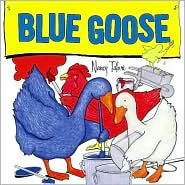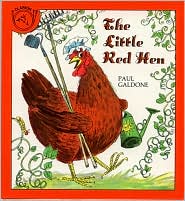[Notice how the fonts for what the boy says and what the father says are different.]Read the book You Can Do Anything Daddy by Michael Rex. Point to some of the words that are in large type (gorilla, robot, Mars) Early Literacy Aside--Example: I pointed to some of the words in the book, the ones with larger type, as I read them. This helps children understand that it is the words we are reading, which develops print awareness, one of the skills children need for later reading.
Don't Worry Bear by Greg Foley
 Book Introduction: Our next book is Don't Worry Bear by Greg Foley. [Run your finger under the title.] In this book the caterpillar says the words "Don't worry, bear" over and over again. Let's practice saying that--"Don't worry. bear." Good! . . .As I read the book, I'll point to you all and you'll know to say, "Don't worry, bear." [As you read the book run your finger under the words don't worry bear, as they say these words.]
Early Literacy Aside--Example: You noticed that I ran my finger under the words don't worry bear each time you all said those words. This helps develop your children's print awareness, knowing that print has meaning and that it is the words we read. You can do this with any book you read!
Book Introduction: Our next book is Don't Worry Bear by Greg Foley. [Run your finger under the title.] In this book the caterpillar says the words "Don't worry, bear" over and over again. Let's practice saying that--"Don't worry. bear." Good! . . .As I read the book, I'll point to you all and you'll know to say, "Don't worry, bear." [As you read the book run your finger under the words don't worry bear, as they say these words.]
Early Literacy Aside--Example: You noticed that I ran my finger under the words don't worry bear each time you all said those words. This helps develop your children's print awareness, knowing that print has meaning and that it is the words we read. You can do this with any book you read!
Board books
 Early Literacy Aside--Example: Board books are a great investment for babies! They allow babies to handle books freely, and even chew them. Good first choices are board books with pictures of everyday things. Try pointing to the pictures and then to the real objects around you.This helps babies get the idea that pictures and words are symbols for real things, a basic concept for later reading.Share a board book of your choice.
Early Literacy Aside--Example: Board books are a great investment for babies! They allow babies to handle books freely, and even chew them. Good first choices are board books with pictures of everyday things. Try pointing to the pictures and then to the real objects around you.This helps babies get the idea that pictures and words are symbols for real things, a basic concept for later reading.Share a board book of your choice.
Submitted by Cindy Christin, Bozeman (MT) Public Library
Print Awareness

Blue Goose by Nancy Tafuri

Help! A Story of Friendship by Holly Keller
 Early Literacy Aside--Explain: When you help your children pay attention to the print in books, you are helping to develop their print awareness, one of the early literacy skills that will later help them learn to read. I'll point out a couple of things in storytime today that will support this skill.
Read the story Help! A Story of Friendship by Holly Keller. [When you come to the page with the deep hole, you have to turn the book the long way.] Wow! This hole is so deep we have to turn the book around. Look the writing changed direction too!
Early Literacy Aside--Example: Children's attention often goes to the pictures. By pointing out the direction of print you help develop your children's print awareness.
Early Literacy Aside--Explain: When you help your children pay attention to the print in books, you are helping to develop their print awareness, one of the early literacy skills that will later help them learn to read. I'll point out a couple of things in storytime today that will support this skill.
Read the story Help! A Story of Friendship by Holly Keller. [When you come to the page with the deep hole, you have to turn the book the long way.] Wow! This hole is so deep we have to turn the book around. Look the writing changed direction too!
Early Literacy Aside--Example: Children's attention often goes to the pictures. By pointing out the direction of print you help develop your children's print awareness.
Print Awareness--Explain Aside
Early Literacy Aside--Explain: Our early literacy tip of the day today is on print awareness. There are many ways we can help children understand that print has meaning. Research studies point out that about 95% of a child's attention goes to the pictures. Today in storytime I'll be pointing out some ways we can help them focus on the print as well.
Little Red Hen

ReadTheLittle Red Hen. As your read the repeated phrases, "Not I," said the dog;"Not I," said the cat; "Not I," said the mouse, run your finger under those words as you say them.
Early Literacy Aside--Example: Running your finger under some of the words helps your child understand that it is the words you are reading, not the pictures. Researchers have found that even for four year olds, 95% of their attention is on the pictures. By pointing you help draw their attention to the text. This helps develop print awareness.
